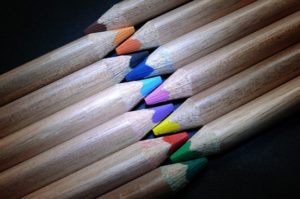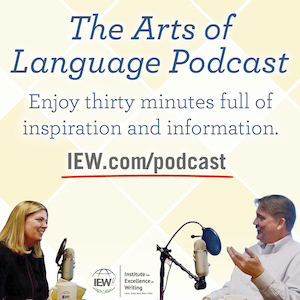Differentiation
What is differentiation? It is the practice of customizing instruction to match the needs and interests of student. It has its roots in gifted education. Differentiation is also applied to instruction and assessments.
So What Does This After To Do With Homeschooling?
Many parents use a “boxed” curriculum or a combination of different premade curriculums that follow the same format. Some of these curriculums rely heavily on paper-based assessments. (No offense to any curriculum makers out there.) However, some children do not and cannot fit to this type of lecture-worksheet setting. Some children need different methods of instruction and assessment.
My son was one of these children. We tried using one of the most prominent curriculums in the homeschool universe, but it did not fit my son’s needs. We fought every day over just doing one worksheet in each subject. I tried adjusting it to just the basic subjects for a short time; yet no luck. I sold the curriculum and tried something new. We spend hundreds of dollars trying to find what would work for him. We also have two other children who would start school a year to two later. I did not learn about differentiation until I went back to college when my youngest child was 3.5 years old. If I had known about this, I would have saved a lot of money.

Applying Differentiation
To apply differentiation to homeschooling, you will need to understand your child’s learning style and your teaching style. Are you a lecturer or a facilitator? Do you favor parent-led or child-led education base? What is the learning style of each child in your home? Children can possess more than one style or fluctuate depending upon the topic at hand. Most of the time a child will lean towards one specific type. My daughter is a visual learner but when it comes to science, she must do and touch in order to understand.
There are three basic types of learners:
- Auditory- They must hear to learn
- Visual- They must see to learn
- Kinesthetic- They must touch/do to learn
Each lesson has an objective that has to be met. Let us say you are working with money for a lesson. The worksheet has children counting coins and filling in a blank. You can differentiate this in two ways for kinesthetic learners: 1) provide real money (or the plastic coins) as a manipulative, then the child can write the answer; 2) provide the manipulative, then you can write the answers for the child. (Some children have issues with writing, but that is a topic for another day).
For the audio learner, you could use the paper or manipulatives then have the child count aloud to you. This provides immediate feedback, which audio learners often need. Then the child could write the answers with your guidance “First, write the dollar sign. Next, we need a one in front of a period to show a full dollar. So write a one and a dot. Next, we need a zero and a four. We use the zero because after we made a full dollar we did not have a full ten. The zero is a place holder to show zero tens.”
Sometimes visual learners do not want to do a worksheet, so you may have to come up with a way for the child to use an artistic approach to the assignment. You could do a reverse worksheet. Using our example of money, you could have your child draw the coins to match the answers. For example, “Draw me coins to show $1.04 with the least number of coins possible.” Another way to change this is to allow your child to create his or her own worksheet. “I want you to create five problems. Each problem you will draw coins and the write the amount for the pictures you draw.”

Instructional Differentiation
Not only can you differentiate how homework/assessments, but you can also differentiate your instructional practices. You do not have to read everything word for word out of a manual. Again using the coin example, you can contact your local library to see if they have children’s literature (picture books) about counting coins. This provides cross-content instruction. You are promoting language arts and literature into mathematics. One of my favorite series of math-based literature is the Sir Cumference series. It teaches concepts such as Pi, circumference, etc.
YouTube and APPs!!!! If you have access to Apple TV or Amazon Firestick (there may be others out there with the same capabilities) you can connect to these devices to turn your TV into a “projector”. (These are like overhead projectors on steroids). I have an iPad and Apple TV. We use the iPad to play games like Carmon San Diego, Mensa Academy, and even some Minecraft. YouTube came out with YouTube for Kids. My kids use this on their own devices. If they come to me with a question that I do not know, I tell them go look for answers on your tablet from people who would know the answer. I have them look up channels such as Veritasium, Smithsonian, Mathantics, and Khan Academy.
Did you know you could let your kids play Wii, PlayStation, or X-Box and count it as part of your school time? Video games are an amazing way to incorporate hand-eye coordination into the school day. Depending on the gaming system, you can find educational games like National Geographic, Doki Doki, Tiny Brains, etc. Not all of the “educational” games are about learning facts. Doki Doki focuses on decision-making skills. Tiny Brains focuses on team building skills.
NOTE: Of course, screen time limits are based upon INDIVIDUAL FAMILIES. I am not advocating for all day in front of a screen. You can use these on rainy days when you cannot send the kids outside to play so you make a few phone calls or prepare lunch. I do not advocate either way (limited screen time or unlimited screen time) because each family is different and that is a family issue, in my opinion.




